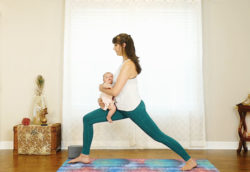Indigestion, bloating, constipation could be very uncomfortable. All of us experience these things from time to time and it is absolutely no fun. We all know that Yoga has many benefits, but did you know that yoga asana could be a tool to help improve your digestive system?
Especially when you feel uneasy in your stomach, the irritation is at its peak. You might be a victim of indigestion. It could happen either when you eat too much or too soon. Indigestion could also happen when you end up eating a lot of oily and spicy food all day. In addition to that, smoking, drinking alcohol or anxiety could be other major causes of this issue.
Dyspepsia is another term for indigestion and the common symptoms of it include abdominal pain, blenching, gas, growling stomach bloating or even vomiting in severe conditions. So, the food we eat affects our metabolism and regardless of however healthy food choice you might have, the body can have difficulties assimilating and absorbing the right nutrients from it. Hence it is imperative that our digestive system remains strong.
Yoga asanas offer many postures that could help cleanse, aid, stimulate and encourage the good and healthy digestive function. Although it is advised not to practice yoga right after the consumption of food, however, if you are feeling any of the above-mentioned symptoms of dyspepsia, you must practice the below few hours after the meal or the next morning.
First let’s Understand the Digestive Process:

“In Ayurveda, agni is the source of nutrition, awareness and intelligence. There are many manifestations of agni that affect the body and mind – from the fire of awareness, to the central digestive fire. Ultimately, agni is the gatekeeper of good health.”
Imagine the digestive system as a food processor and “agni” as the blades in it. Consider the body toxins as fruit waste and the energy to process as juices.
Now, if the blade of the processor is weak, there is lesser juice that is produced and more of the wastes from the fruit. Thus if “agni” – the blade of the food processor is weak, the whole of the digestive system produces lesser energy (juice) and results in more fruit waste which is the body toxin in this case that accumulates in the cells of the body. A strong agni hence is needed for a good digestive function of the body. Yoga helps you to build a stronger agni and in turn helping your digestion better and stronger.
How Yoga helps Improve Digestion?
There are few points below that tell you why and how yoga helps improve digestion.
- The digestive fire ‘agni’ that we spoke about is stimulated by the body with yoga and that increases the appetite to balance the metabolism.
- The asanas help you stretch the body, massaging the muscles of abdomen. The food is made to move efficiently along the digestive tract in the body.
- The bowel movement in body is regulated with the help of yoga and relieves constipation.
- Helps the body to circulate the blood more effectively to the digestive organs increasing the aid for digestion.
- Yoga keeps your mind and body happy and active. Thus you are more likely to eat a balanced food and ease your digestive function.
- The fatty deposits in the body are discouraged by yoga helping you to keep fit.
- The body gets detoxed with the help of regular practice of yoga and toxins accumulating in the body due to bad diet are flushed out.
5 important Postures to Improve Digestion:
1. Ardha Matsyendrasana – Sitting Half Spinal Twist

This posture helps in making the spine supple, increasing the elasticity of spine opening the chest and increasing the oxygen flow into the lungs. It helps in improving the liver and pancreatic health improving the digestion overall.
- How to perform:
- Sit up straight with the legs stretched out parallel to ground in front of you. Keep the feet together and the spine erect.
- While bending the left leg, place heal on the left foot right beside the right hip. Optionally, you can keep the other leg straight.
- Place the right leg over the left knee as shown.
- Place the right hand behind you and the left hand on the right knee.
- Twist the upper body – the waist, shoulders, and neck in this sequence to the right side and look over the right shoulder.
- Make sure to keep the spine erect all times.
- Hold and continue with proper breathing – gentle long breaths in and out.
- While breathing out, release the right hand first which is the hand behind you, then release the waist gradually releasing the chest, lastly the neck and sit up in a relaxed yet straight position.
- Repeat with the other side.
- While breathing out, come back to the front and relax.
2. Pawanmuktasana (Wind-relieving pose)

Pavanmuktasana helps in stretching the lower back and abdominal muscles. It is one of the best yoga asanas for the beginners to tone the muscles of the abdomen. It helps in releasing the gastrointestinal problems.
- How to perform:
- Start by lying on your back, with your legs and arms extended straight.
- As you exhale, bring both of your knees towards your chest. Clasp around your knees with your hands.
- While holding only your right knee, let go off your left leg and extend it parallel to the floor. Hold this pose for at least 30 seconds to 1 minute.
- Draw back your left knee towards your chest and clasp both knees again with your hands.
- While holding only your left knee, let go off your right leg and extend it along the floor. Hold this pose for the same of time as for the left leg.
- Finally, repeat the same by drawing both knees to your chest.
3. Camel Pose (Ustrasana)

Ustrasana helps in adding flexibility to the body along with strengthening the body. It helps in improving digestion and relieves constipation.
- How to perform:
- Kneel on the yoga mat while placing your hands on the hips.
- Keep your knees in line with the shoulders and the sole of your feet facing the ceiling.
- As you inhale, draw in towards the pubis your tail-bone towards as if being pulled from the navel.
- At the same time, arch your back and slide your palms over your feet till the arms are straight.
- Do not flex or strain your neck, keep it in a neutral position.
- Stay in this stance for a couple of breaths.
- Exhale and slowly come back to the initial posture. Draw your hands and bring them back to your hips as you straighten up.
4. Naukasana yoga- Boat House

Naukasana helps in strengthening the back and abdominal muscles along with toning leg and arm muscles. A highly effective for hernia. It stimulates digestion by improving the secretion of digestive juices.
- How to perform:
- With your feet together, lie on your back and keep your arms beside your body.
- Take a deep breath in and as you let your breath out, lift your chest and feet off the ground, extending your arms towards your feet.
- Keep eyes, fingers and toes in a line.
- As the abdominal muscles contract, feel the tension in your navel area.
- Keep inhaling and exhaling deeply and easily while maintaining the pose.
- As you exhale, come back to the ground steadily and relax.
5. Seated Forward Bend (Paschimottanasana)

Paschimottanasana helps the stretching of the lower back, hips and hamstring. Tones the shoulder while toning the abdominal and pelvic organs. It helps in relieving constipation and gives relief from flatulence.
- How to perform:
- Sit up with the legs extended outwards straight in front of you, keeping the spine upright and toes flexed toward you.
- Inhaling, raise both arms above your head and stretch up.
- While exhaling, bend forward from the hip joints, chin moving near the toes. Keep the spine straight focusing on moving forwards in the direction of the toes, instead of down towards the knees.
- Keep your hands on your legs, wherever they reach, without compelling. If you can, grip your toes and pull on them to help you go forward.
- While inhaling, lift your head somewhat and lengthen your spine.
- While exhaling, gently move the navel towards the knees.
- Repeat this posture two or three times.
- Drop your head down to take a break and breathe deeply for 20-60 seconds.
- Extend the arms out in front of you.
- While inhaling, with the strength of your arms, come back up to the first posture while sitting.
- Exhale and lower the arms.










































